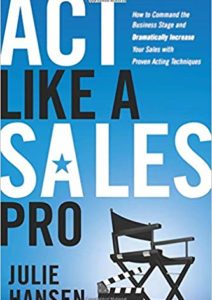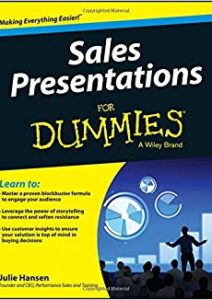Have you ever sat through a presentation and thought, “Why am I here?” Presentations that do not answer the question “Why?” are confusing, try your patience, and usually lead nowhere. In his popular TED Talk, Start with Why, Simon Sinek proposed that people won’t fully buy into a product, service or concept until they understand the “why.” This question of addressing a prospect’s “why” is fundamental to a successful sales presentation.
But starting with why is, well…just the start. To really connect with prospects, it’s important to know which specific “why” you are addressing. Most prospects will be focused on one of three types of “why” questions at any given time:
Why should I buy this product or service?
Why should I buy it from you?
Why should I buy it now?
Starting with the right “why” is critical for advancing the conversation or the sale. Consider the following example:
Imagine you are trying to decide whether to buy a house or continue to rent. You call up an agent and he talks for fifteen minutes about why you should choose his company’s services rather than a competitor’s. But your question was not “Why should I use you to help me buy a house?” so likely this conversation has left you confused, annoyed, and nowhere closer to making a decision. If the agent had instead answered your central question, “Why should I buy vs. rent?” he may have very well ended up with a new client.
Addressing the wrong “why” in your sales presentation is often due to a lack of discovery or making assumptions. This is a common and costly mistake. Identify the central “why” you need to address. To assist you in developing a presentation that adequately addresses your prospect’s concerns, you can go here to find valuable resources and templates that can enhance your sales pitch.
3 “Start with Why” Questions:
Here are the key things to take into consideration when addressing each type of “why” question in your presentation:
1. Why should I buy this product or service?
In this situation, your prospect may be new to the buying cycle or unaware that he has a problem that needs solving.
In this “why buy” scenario, parading out all your product features and benefits will be pointless until you have prospect buy-in that there is a problem and they are interested in solving it. Your presentation will have a much greater chance for success if you focus on the impact of the problem and why it needs solving.
You can create a compelling case for change by exploring the contrast between the prospect’s current state and a new and improved state. For the prospect grappling with “why buy,” the use of an analogy or customer success story early on in your presentation can be helpful in overcoming the natural resistance to change.
2. Why should I buy from you?
In this situation your prospect may have determined that the type of service or product you provide could solve his problem, but he is not convinced that he should buy it from you. Or, he may be considering other options altogether. For example, let’s say you are selling a CRM solution and your prospect is experiencing a drop in sales revenue. In addition to CRM platforms, he is considering other options, like hiring more salespeople, or running a marketing campaign. Either way, you are facing competition.
When going head to head with competitors it’s important to sell value to avoid falling into a pricing war or a feature vs. feature smackdown. Knowing your competition well so you can position your competitive advantages upfront in your presentation is also important. And, use timing to your advantage. If you have the opportunity to deliver your presentation before your competition you can disarm and address any potential landmines your competition might be planting.
3. Why should I buy now?
While this prospect has identified a need and has indicated that you are the preferred vendor, she has a decided lack of urgency when it comes to solving the problem or achieving her goal. Until this prospect has made the decision to buy a priority and not just a theory, selling your company, your product, or category will do little to inspire action in your prospect.
In this case, the focus of your presentation should be to create urgency by highlighting the risk of inaction or the cost of delay. As you go through the body of your presentation explore each challenge your prospect is facing and the impact of not resolving the problem now.
Summary:
Identifying the right “why” is an important first step in every presentation. But don’t just start with why. Avoid an instant disconnect by quickly narrowing that down to which “why” question you must address. Only by focusing on the “why” question specific to your prospect at each point in the sales cycle can you successfully move the sale forward.













Comments